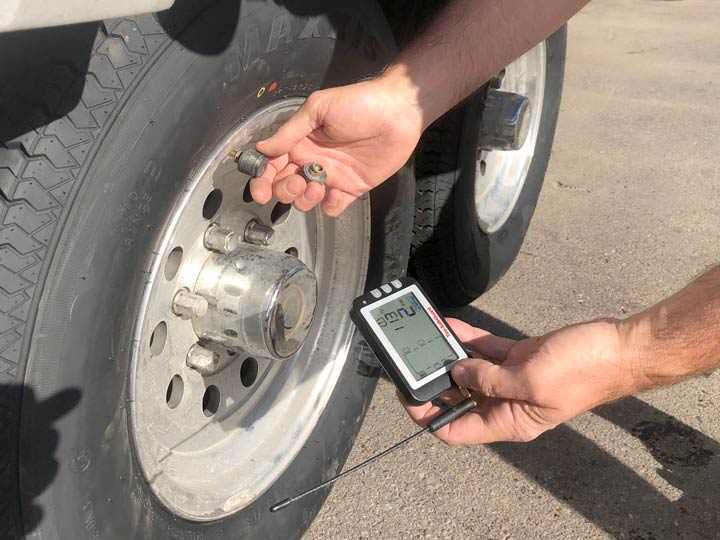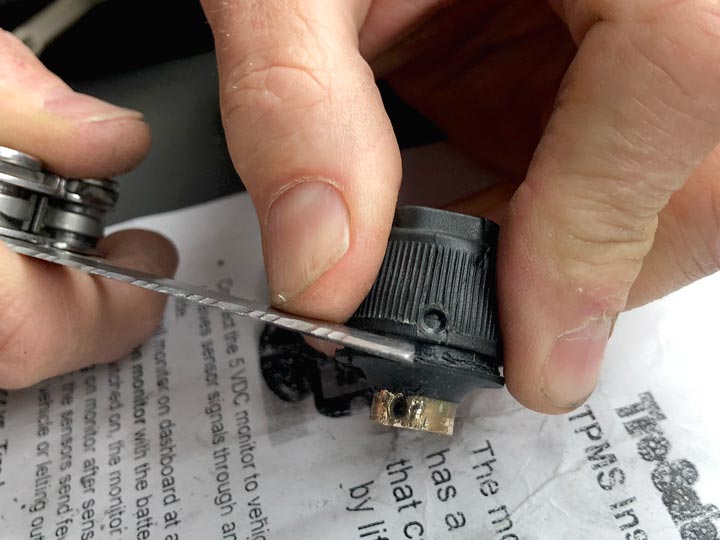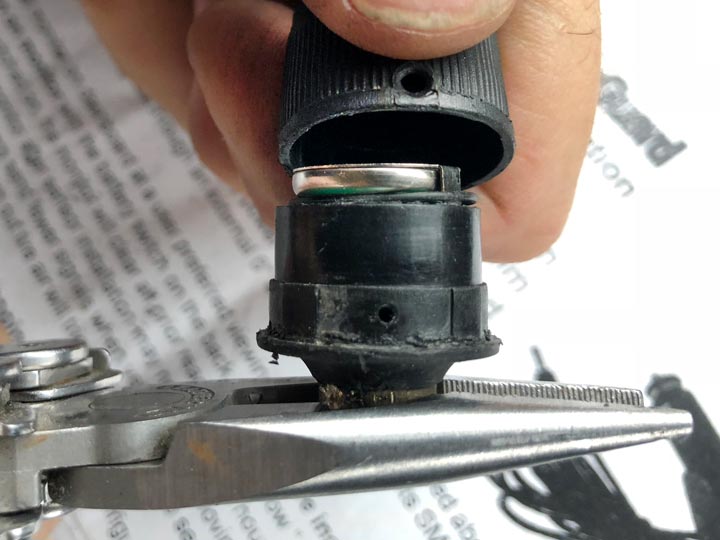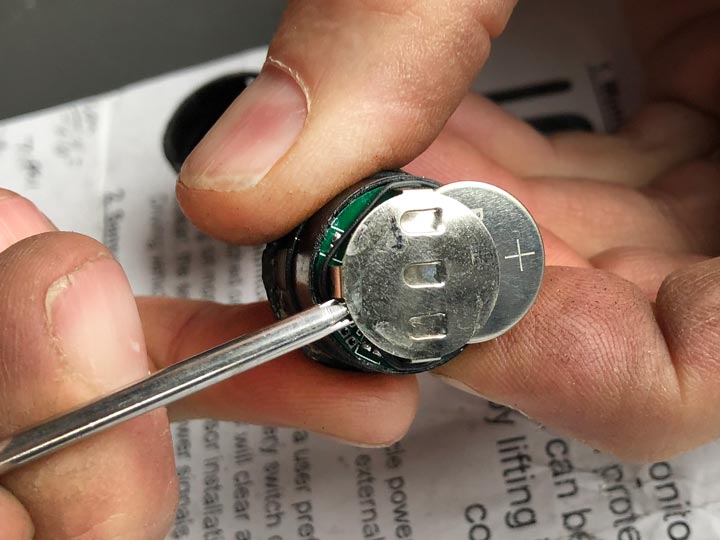If you haven’t yet purchased a Tire Pressure Monitoring System for your truck and trailer (or RV and toad), read up on why you need one. I’ll wait…
Tire-SafeGuard TPMS Review and Installation Tips
Before RV TPMS, After RV TPMS. There’s No Comparison.
Okay, good. Hopefully you chose the TireSafeGuard TPMS. They make systems to fit all rigs, and we are very grateful for ours! Now, if you’ve had your TPMS a while, here are a couple quick tips you may find helpful.

Check TPMS Sensors When Getting Tires Serviced
I learned the hard way to check our TPMS sensor cap placement after buying new tires for the truck and then getting two flats before we had even traveled 500 miles. When the alarm sounded that first time, I inspected the tire indicated and found no visible damage. Before checking the pressure manually, I took a look at the other tires to discover it was the cap on the opposite site throwing the alert signal.
When we got the new tires, the shop had placed the #4 sensor, on the #3 tire. So: Always confirm that your TPMS sensor caps are reinstalled onto the correct tires after any servicing, or when buying new tires. Or: Take the sensors of your tires prior to visiting any tire shop. (This could also prevent your caps from getting misplaced. Requiring the purchase of replacement sensor caps!) And: If the tire indicator labels have come off your sensor caps, write a number on them with permanent white marker. Note to self: I need to do this.
How To Check TPMS Sensor Caps
If your TPMS sensor caps have been placed on the wrong tires, lost their labels, or if you are getting a TPMS false alarm, it’s easy to determine which caps go on which tires.
Carry your portable monitor with you as you remove each sensor cap. Assuming you knew how to configure your TPMS correctly upon installation, the tire you are at each time should correspond with the same tire indicated when the alarm sounds on the monitor. If not, you know which tire to put the cap back on.
How To Replace TPMS Sensor Cap Batteries
Speaking of false alarms…here’s another helpful tip for the Tire-SafeGuard TPMS, considering its poor documentation and lack of technical support–honestly, the only fault I have found with this system.

Our slow leak alarm sounded for a trailer tire less than a week after buying new trailer tires, the night before we were leaving Fort Collins. Considering what happened with our brand new truck tires, I thought the worst and topped off the tire pressure expecting to head back to the shop the next day on our way out of town. In the morning, the monitor was no longer receiving any signal from the pressure sensor cap on that tire. Then I remembered, each cap has its own small battery.
FYI: CR1632 3V lithium batteries are either very rare, or very popular. Two different Walmart stores had none in stock. We finally found some at our third stop. Note to self: Stock up on sensor cap batteries!

How long do TPMS sensor cap batteries last?
Good Question. It’s hard to be exactly sure. There is no telling when they were installed, how long they sat on the shelf, at the manufacturer, and they are always on. When not in motion, the sensors do revert to low power mode sending out a signal less frequently. How long the batteries last therefore also depends on how much you move around.

I installed our Tire-SafeGuard 8-Cap Truck-Trailer TPMS in January, 2018 and the first battery went bad in late September that same year. None of other seven batteries have failed, yet. So, instead of asking how long the batteries last, always have a pack of CR1632 batteries on hand to be prepared.

Now, replacing the batteries in the small sensor caps is rather straightforward, but not exactly simple. After all, the caps are built tough enough to withstand the centrifugal force of revolutions per minute a typical tire travels, for a very long time–considering the amount of miles traveled by typical full-time RVers, that is a lot of revolutions. But I digress, yet again…

Tire-SafeGuard TPMS Battery Replacement.
NOTE: An eyeglass repair kit screwdriver works best.
- Remove sensor cap from tire.
- Use small Phillips screwdriver to remove screws.
- Note there are two small screws! One on each side of cap.
- Place small screws immediately in small bag or envelope.
- Try to pry open cap. Good luck.
- Use a thin dull blade to release cap off base.
- Once cracked open, use back of blade to loosen cap.
- Grip base with pliers if necessary, try not to mar threads.
- Rock and/or twist cap off base.
- Do not misplace small o-ring. (See #4.)
- Push battery out of slot using small screwdriver.
- Note which side of batter is up!
- Insert new batter in same position
- Replace o-ring on sensor cap base.
- Align holes in cap with screw hole on base.
- Squeeze cap onto base and replace screws.
- Replace sensor cap on correct tire. (See first section above)